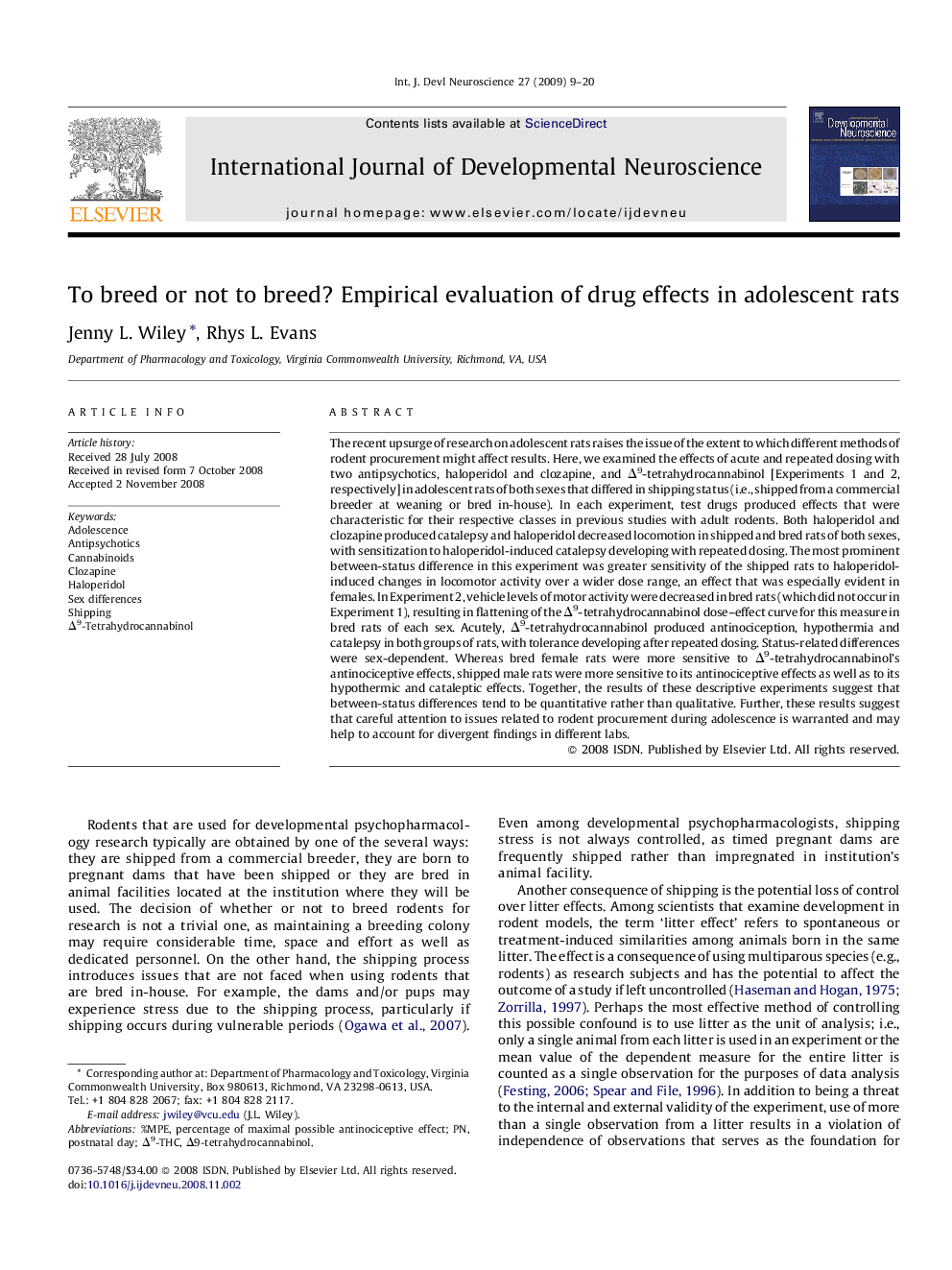| Article ID | Journal | Published Year | Pages | File Type |
|---|---|---|---|---|
| 2787006 | International Journal of Developmental Neuroscience | 2009 | 12 Pages |
The recent upsurge of research on adolescent rats raises the issue of the extent to which different methods of rodent procurement might affect results. Here, we examined the effects of acute and repeated dosing with two antipsychotics, haloperidol and clozapine, and Δ9-tetrahydrocannabinol [Experiments 1 and 2, respectively] in adolescent rats of both sexes that differed in shipping status (i.e., shipped from a commercial breeder at weaning or bred in-house). In each experiment, test drugs produced effects that were characteristic for their respective classes in previous studies with adult rodents. Both haloperidol and clozapine produced catalepsy and haloperidol decreased locomotion in shipped and bred rats of both sexes, with sensitization to haloperidol-induced catalepsy developing with repeated dosing. The most prominent between-status difference in this experiment was greater sensitivity of the shipped rats to haloperidol-induced changes in locomotor activity over a wider dose range, an effect that was especially evident in females. In Experiment 2, vehicle levels of motor activity were decreased in bred rats (which did not occur in Experiment 1), resulting in flattening of the Δ9-tetrahydrocannabinol dose–effect curve for this measure in bred rats of each sex. Acutely, Δ9-tetrahydrocannabinol produced antinociception, hypothermia and catalepsy in both groups of rats, with tolerance developing after repeated dosing. Status-related differences were sex-dependent. Whereas bred female rats were more sensitive to Δ9-tetrahydrocannabinol's antinociceptive effects, shipped male rats were more sensitive to its antinociceptive effects as well as to its hypothermic and cataleptic effects. Together, the results of these descriptive experiments suggest that between-status differences tend to be quantitative rather than qualitative. Further, these results suggest that careful attention to issues related to rodent procurement during adolescence is warranted and may help to account for divergent findings in different labs.
